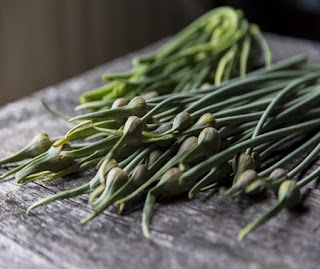As the deliveries have started, I see an increase on one of my favorite vegetable….GREENS! I am sure we all have things we love about summer; as for me, I just love having lots of greens for lunch. They are in season and each day I can create a salad that doesn’t feel the same, plus, who wants to be cooking when the temperatures are high? I love to pair greens with seasonal fruit (those that have the fruit add-on can easily do that) and adding homemade dressing with olive oil, salt, lemon, mustard and honey (another item of choice to add on to your deliveries). While I sort of just eyeball the amounts when I make the dressing, I found a similar recipe online (see link here - https://jamjarkitchen.com/2022/04/20/honey-lemon-vinaigrette/#recipe )
Now comparison on 12 different greens is featured in an article from Business Insider (see article here - https://www.businessinsider.com/best-salad-greens-kale-spinach-lettuce-2017-6 ), ranking 12 common greens based on vitamins, protein and other nutrient content. I want to share how I use each of the greens featured and maybe add some personal tips on how I prepare them:
1. Iceberg Lettuce – Did anyone say tacos? It may not be as high in terms of nutritional value but it feels fresh and has high water content which is great for the summer time.
2. Arugula – Because of its peppery flavor I tend to mix it with other types of greens of milder taste but enjoy it best when served with grilled veggies like red peppers or corn.
3. Radicchio – This one has lots of vitamin K. It has a bit of a bitter taste but I enjoy it grilled or sautéed with some oil and garlic. And if you want to eat it raw, cheese is your best friend.
4. Watercress – One that is not as loved for its bitter taste, but great to lower risk of type 2 diabetes. I love to chop a lot of tomatoes and add the honey lemon dressing to it.
5. Endives – Potassium, Fiber, Folate as well as the usual Vitamins A and K are in this vegetable. Another one that is great grilled or sautéed and if eaten raw, best to chop it thinly and add some grapes to the salad (thank me later).
6. Leaf Lettuce/Butter Lettuce/Romaine – While different they all pack some Vitamin A, K, and Potassium. My trick to keep them fresh is to wash and dry then wrap some damp paper towels and in a Ziploc bag. However, I have to say the greens are so fresh from the farm I feel that they hold up well without much effort.
7. Chard/Broccoli Leaves/Spinach/Kale – These are the highest in nutrients and surely my favorites. Chard – This one I would put in the Instant Pot to slow cook with some chicken stock, bones or bacon. Spinach – my favorite of all. I love it sautéed with eggs for breakfast, as a salad with pretty much anything for lunch and if I need a smoothie that’s the green of choice to add without affecting the flavor profile so much. Broccoli leaves and Kale – these I prefer cooked but if I want to make a salad I like to massage with my hands before mixing the rest of the vegetables.
Hopefully you try some tips to use your greens and learn to love and enjoy them as much as I have. Surely getting the deliveries through the CSA has been a great motivation to add more greens to my diet.
*****
Interested in learning more about the Norwood CSA? Check out our Info Page: https://norwoodfoodcoop.blogspot.com/2021/10/how-to-join-norwood-csa.html

